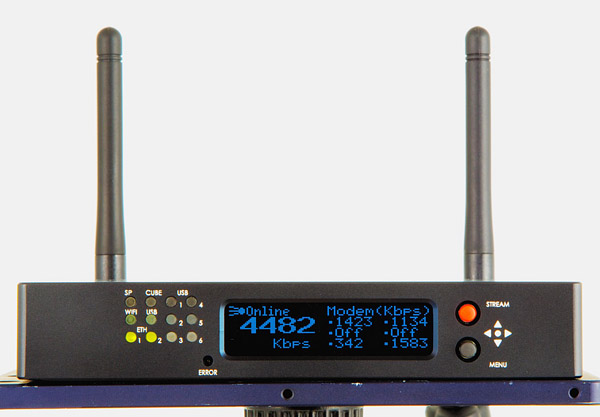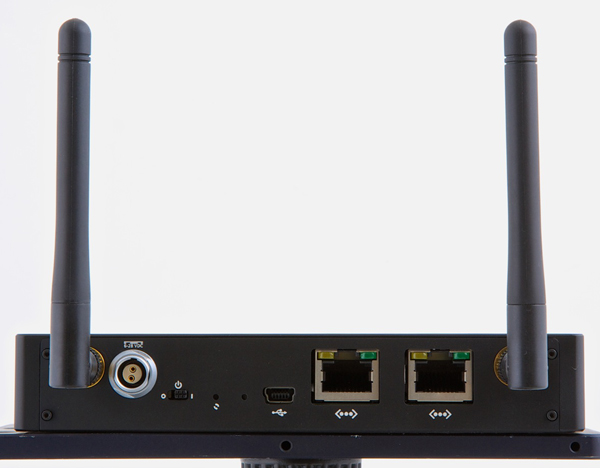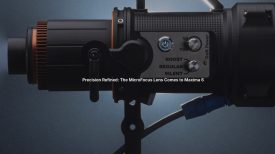By site editor Dan Chung:
Introducing Link: Bonded Cellular Hotspot from Teradek on Vimeo.
If you’re one of the growing band of TV camera operators or video journalists required to use cellular technology to send video back to your news organisation, you’ll be familiar with this problem: you set up and test your cellular connection at the location you want to broadcast from, but while it works just fine in certain places, in other places it struggles. Invariably it’s the place where the action happens that has poor coverage.
Link is the latest cellular bonding solution from Teradek that adds a new twist to this rapidly developing technology. It is a cellular hotspot, taking up to 6 cellular USB modems and forming a bonded connection intended to be placed at a location with the best signal reception at your venue. This allows camera crews to connect the signal from their Teradek Cube or Brik encoder equipped HD cameras to Link’s 300ft of dual band a/b/g/n WiFi coverage – without having to worry about whether their cellular modems will lose coverage as they move around. Link also supports asymmetrical bonding to guarantee the best possible connection, i.e. you can mix cellular, with Ethernet, fibre or even the popular BGAN satellite terminals.

Once Link receives the wireless video feed from one or more Teradek encoders, it uses its aggregated connections to transmit the stream via the internet to a Teradek Sputnik server back at the station or newspaper, where the various feeds are recombined into a cohesive video stream. From Sputnik, the feed can be decoded to a SDI feed for further editing or live broadcast. Alternatively, the Sputnik can send the video stream straight onto a content delivery network like Livestream.

When it comes to power, Link offers you the choice of a V-mount or Anton Bauer Gold-mount battery plate so you can keep the device running for long periods of time on a regular broadcast battery.
Link has another unique trick up its sleeve – the device acts similarly to a regular wireless router, allowing any 802.11 enabled device to connect to it for internet access even while you are broadcasting. This means you can upload edited video content from the field over Link’s cellular connection. It also enables iOS devices to monitor the live feed in real time. Link also accepts feeds from multiple Teradek encoders simultaneously, which opens the doors for multi-cam live broadcasts over cellular bandwidth.
So, how would you use this technology? Link should work well for live event coverage during the upcoming US elections and provides an attractive alternative to other common backpack systems. The feature of bonding multiple BGAN terminals and cellular connections may allow for higher quality transmission from war zones and disasters too.

Teradek also has a partnership with ZiXi to feed HD quality broadcast video back to a TV station. This is achieved by installing a ZiXi license on Link and feeding the wireless video streams from Teradek encoders through one of Link’s ethernet jacks. Zixi is a proprietary streaming protocol designed specifically to guarantee HD quality video over the internet, surpassing the performance of common generic protocols such as RTMP. After being transmitted to the web, the stream is processed through ZiXi’s cloud service and optionally fed via fibre lines to major broadcast stations.
The Teradek Link ships September 2012 for $2990. Watch out for more details on the Teradek site.
Full disclosure: Teradek was a sponsor of Dslrnewsshooter.com’s coverage of NAB 2012






